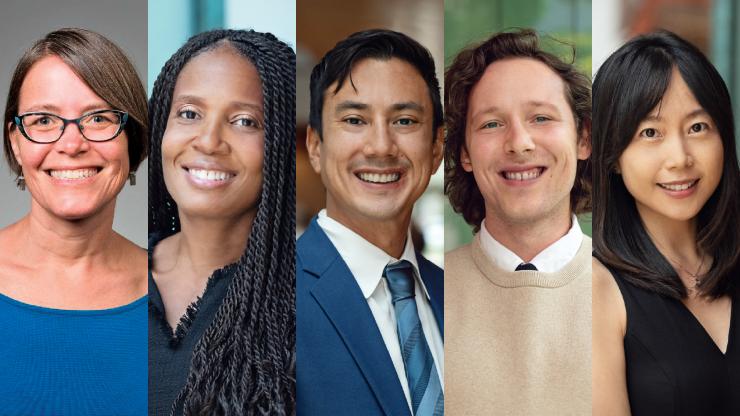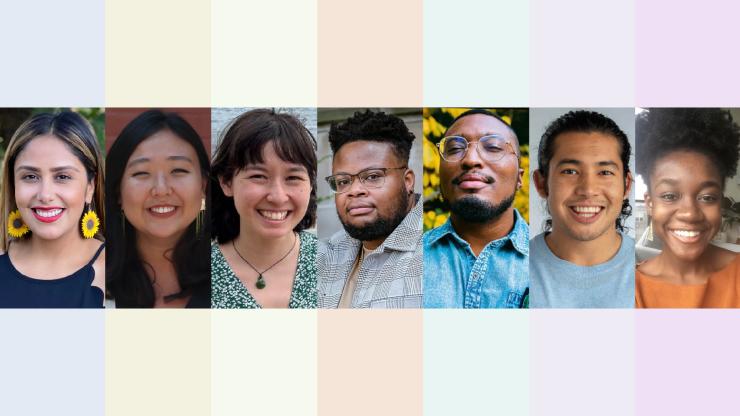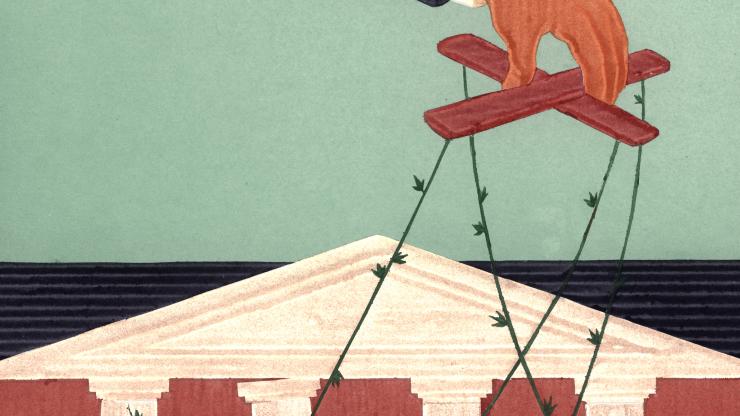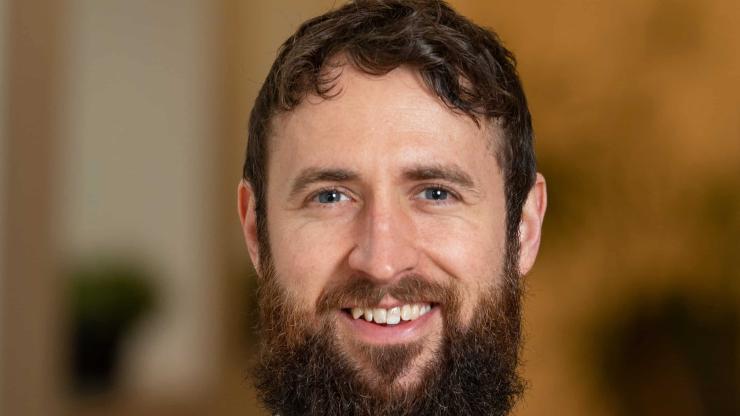The Power and Potential of Education Policy
Faculty research offers surprising insights and meaningful solutions for education policy during and after the COVID-19 pandemic
Since early 2020, the COVID-19 pandemic has fundamentally altered public education in the United States, with many schools introducing remote learning for at least part of the year and making urgent decisions in the face of constantly evolving conditions, creating new challenges for teachers, parents, and children alike. Education policy researchers are now examining the extent of learning setbacks experienced by youth and the harmful impacts to our public education system.
For three education policy researchers, all parents themselves, the task is now to evaluate what happened—from inside early childhood classrooms to decisions made by school boards and around family tables—and understand the pandemic's effects on learning in order to establish a way forward.
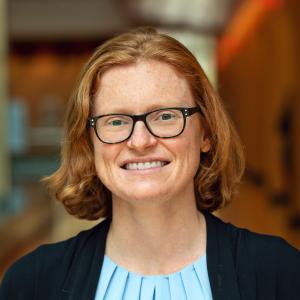
Christina Weiland, Associate Professor in the School of Education and Co-Director of the Education Policy Initiative (EPI) at the Ford School, felt that it was essential for policymakers to have a clear and accurate lay of the land when making COVID-related decisions and allocating resources. There had been a significant amount of research conducted even from early 2020 on the effects of the pandemic on young children and early childhood education programs, but local school administrators and policymakers often struggled to access or evaluate these resources while coping with urgent, rapidly changing needs.
Weiland, who studies how quality early childhood education can affect student outcomes later in life, understood the importance of getting research findings in the hands of educators and policy makers.
When the pandemic began, Weiland's own children were four months old and eight years old. “For me, it meant no child care for 16 months because we were very cautious with our little guy until vaccines were available,” she says. This also meant round-the-clock hours for Weiland and her husband as they juggled work and childcare, an experience that is familiar to many families. “I would say our lives are definitely still not back to normal,” she says.
Weiland and her team worked to synthesize the volume of early education policy research and guidance into a cohesive picture of where the country stood in order to offer evidence-based solutions for moving forward.
That picture is one of many challenges. “Teachers' working conditions got really hard,” Weiland says. She notes that early childhood centers were often open during times when public schools weren't, placing staff on the front lines in a period when there was sparse information on how the virus was transmitted. “They were there showing up day to day for their kids,” Weiland says. The added pressures caused many teachers to feel overwhelmed or experience depression, with a significant number leaving the profession entirely.
The inherent challenges of learning and education in a pandemic were exacerbated by the understandably emotional conflicts arising when parents disagreed with their public school's decision to hold classes in-person or remotely.
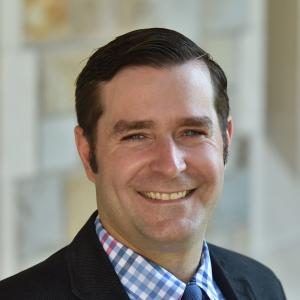
“Our research looking at how school enrollment shifted during the pandemic showed that parents reacted very differently even when facing the same situation,” says Kevin Stange, Associate Professor of Public Policy at the Ford School, Associate Professor of Education in the School of Education, and Co-Director of EPI. He is currently on leave to serve as an adviser for the U.S. Department of Education.
Stange's research on the pandemic explores the drop in public school enrollment spurred by different learning modalities. Many parents unhappy with a school's decision to hold in-person classes opted to transition their children to a home school environment, while parents disagreeing with their public school engaging in remote learning placed their children in private schools instead.
“My long term concern is that this shift that we saw with the pandemic might lead to an unraveling of the social contract that provides support for public education,” Stange says. Though individual families may do what they feel is best for their own children, taken collectively, the decrease in enrollment could have significant implications for public school resources.
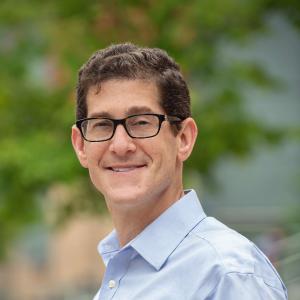
Even if parents objected to their local school board's decisions, though, research by Brian Jacob, Walter H. Annenberg Professor of Education Policy and Professor of Public Policy, Economics, and Education at the Ford School and Professor of Education at the School of Education, showed that, in general, administrators were behaving rationally. "At some baseline level, they were doing what you would hope they would do, balancing costs and benefits and making decisions based on COVID cases and how it changed over time," he says.
Jacob's research shows a greater degree of nuance both in initial decisions regarding learning modality for the 2020-21 school year and for decision points that emerged throughout the year.
“We show that as vaccines became more widely adopted, COVID case rates were less predictive” of whether a school would hold in-person learning the following week, Jacob says. “They were less worried because they thought people would be able to protect themselves.”
“We also found that they were cognizant of their peers. Like if Saline [schools] went back in person, that put pressure on Ann Arbor [schools],” Jacob adds. Stange's research also supports this conclusion.
The subtle and nuanced deliberation that went into decisions on learning modality evidenced by his research surprised Jacob. “In the midst of the early pandemic, it wasn't clear that there was a lot of thought to any of this,” he says. “Ann Arbor is a relatively affluent district that had the resources and should have had the capacity to do things that other districts with less money probably didn't have,” he says. “I was definitely frustrated, and that was one of the things that spurred my interest in understanding what was going on.”
Stange, whose research highlights parental decisions, also notes the challenges faced by administrators. “Being a head of a school district during the last three years has to be the hardest job I can imagine,” he says. “I have deep empathy for folks in those positions.”
Locally, Stange cited Kalamazoo as a district that was responsive to parental concerns. “They conducted surveys to get people's concerns on the table and to weigh them,” he says. This resulted in Kalamazoo schools maintaining remote learning for most of the 2020-21 school year, "and the parents were pretty happy with that." In other districts, he says, board members instead debated with each other and handed down decisions that upset parents.
So what happens next? Though a recent study of test scores on the National Assessment of Educational Progress seems to confirm parents' fears about the pandemic's effects on children's education, Weiland would prefer to focus on the solutions her research points toward. Children of all ages have clearly experienced learning setbacks—a term Weiland prefers over the more negative-sounding “learning loss”—but these should not be insurmountable, she says. “Young kids can learn really fast under the right conditions, and they can come back from setbacks.” Weiland stresses the need to focus resources and spending on evidence-based approaches including tutoring, improved curricula, and increased focus on social-emotional learning, while supporting educators and bolstering early childcare programs. “We really need to follow the science of teaching and learning.”
Weiland also says that it is essential to address longstanding problems with the education system.
“Some of what's broken now wasn't broken by the pandemic. We had high turnover in early childhood settings before the pandemic,” she says. “Basically anything that was a crack before the pandemic has become a chasm. So, we need to think about the recovery not just being short term, but around longer term investments.”
